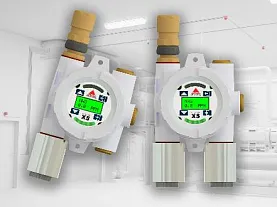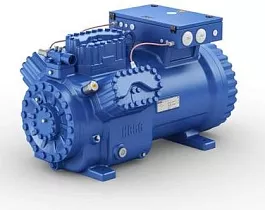The United States Natural Refrigerants Market achieved a valuation of USD 279.09 Million in 2022 and is projected to experience substantial growth throughout the forecast period, with an expected Compound Annual Growth Rate (CAGR) of 2.28% until 2028 and is expected to reach USD 316.21 million by 2028. Natural refrigerants are artificially created substances with the unique ability to self-repair damage autonomously, without external diagnosis or human intervention. These materials mimic the natural healing ability of living organisms to restore functionality and mend wounds. The versatile applications of natural refrigerants span various sectors including aerospace, automotive, civil engineering, biomedical, and electronics. Examples of these substances encompass polymers, metals, ceramics, concrete, and coatings. This growing utilization of natural refrigerants plays a pivotal role in the expansion of the United States Natural Refrigerants Market in the predicted period.
The global emphasis on addressing climate change and adopting sustainable practices fuels the demand for environmentally friendly solutions across industries. In the United States, the adoption of natural refrigerants is witnessing a significant surge as businesses, policymakers, and consumers seek alternatives to conventional synthetic refrigerants that have adverse environmental impacts. The transition to natural refrigerants reflects a broader commitment to sustainability, energy efficiency, and the reduction of greenhouse gas emissions. The escalating demand for sustainability in cooling and refrigeration systems has brought natural refrigerants into prominence. These substances, derived from naturally occurring sources, have notably lower environmental impacts compared to synthetic refrigerants. The increasing demand for eco-friendly refrigeration drives the growth of natural refrigerants. Moreover, concerns over the detrimental effects of synthetic refrigerants like hydrofluorocarbons (HFCs) on the ozone layer and climate change have triggered the search for greener alternatives. International agreements such as the Kigali Amendment to the Montreal Protocol have prompted nations like the United States to phase out high-global-warming-potential (GWP) refrigerants in favor of low-GWP alternatives, including natural refrigerants. Furthermore, natural refrigerants often exhibit higher energy efficiency than their synthetic counterparts, resulting in reduced energy consumption and operational costs. As consumers become more environmentally conscious, the demand for sustainable products and services, including those using natural refrigerants, has surged. The need for innovative and sustainable cooling solutions across various sectors such as commercial refrigeration, industrial refrigeration, and air conditioning further bolsters the adoption of natural refrigerants.
This collective focus on sustainability and the environment propels the growth of the United States Natural Refrigerants Market.
Key Market Challenges:
1. Limited Availability of Natural Refrigerants:
While the adoption of natural refrigerants promises enhanced sustainability and environmentally conscious cooling solutions, their limited availability poses a challenge. This constraint arises due to several factors, such as the less established or widespread production and distribution networks for natural refrigerants compared to synthetic ones, resulting in supply limitations. Moreover, varying regulations and standards governing refrigerant use across regions can restrict the availability of certain natural refrigerants due to safety concerns or lack of regulatory approval. Some existing cooling and refrigeration systems are designed to work specifically with particular synthetic refrigerants, making retrofitting for natural refrigerants challenging. The past limited demand for natural refrigerants has also contributed to a smaller market size, subsequently impacting their availability. The addressing of these supply and availability constraints becomes vital for the successful and widespread adoption of natural refrigerants.
2. Safety Concerns Associated with Natural Refrigerants:
While the adoption of natural refrigerants is driven by the need for reduced environmental impact and greater sustainability, it's essential to acknowledge and address safety concerns associated with their use. Ensuring safety through risk assessment, appropriate safety measures, and education is imperative to ensure the responsible and secure implementation of natural refrigerants. Several natural refrigerants, such as hydrocarbons and specific variations of ammonia, possess varying degrees of flammability and toxicity, presenting safety challenges. Proper understanding, training, and safety measures are crucial to ensure the transition to natural refrigerants is both safe and responsible.
Key Market Trends:
1. Hydrocarbon Refrigerants Expansion:
In the quest for more sustainable and eco-friendly cooling solutions, hydrocarbon refrigerants are gaining prominence. These natural refrigerants, including propane (R290) and isobutane (R600a), are noted for their low environmental impact and energy efficiency. As industries and governments prioritize environmentally conscious practices, the expansion of hydrocarbon refrigerants drives innovation, minimizes carbon footprints, and redefines the cooling landscape. Hydrocarbon refrigerants bring a range of benefits that make them an appealing choice for various applications. These refrigerants possess a remarkably low GWP, contributing minimally to global warming and climate change. Furthermore, their superior thermodynamic properties lead to enhanced energy efficiency, resulting in reduced energy consumption and operational costs. As hydrocarbon refrigerants are derived from natural sources, they are a renewable and sustainable choice for cooling applications. Their usage also doesn't contribute to ozone depletion, further reducing their environmental impact. Hydrocarbon refrigerants are particularly suitable for small-scale refrigeration systems, such as those used in household refrigerators and freezers. Their energy efficiency and eco-friendliness significantly drive their expansion.
2. Technological Advancements:
The pursuit of sustainable and environmentally friendly cooling solutions has triggered significant technological advancements in the realm of natural refrigerants. As industries and researchers work to address climate change and reduce carbon footprints, technology plays a pivotal role in enhancing the efficiency, safety, and accessibility of natural refrigerants. From improved system designs to cutting-edge manufacturing processes, these technological innovations are reshaping the landscape of cooling and refrigeration. Advanced technologies are optimizing the performance of cooling systems that use natural refrigerants. Innovations in heat exchangers, compressors, and system controls are boosting energy efficiency and overall system performance. For instance, compact and efficient microchannel heat exchangers are improving heat transfer and decreasing refrigerant charge, leading to more energy-efficient systems. Variable speed compressors that adjust their speed based on cooling demands deliver precise and efficient cooling while minimizing energy consumption. Moreover, smart controls and Internet of Things (IoT) technology enable remote monitoring and control of cooling systems, optimizing their performance and detecting issues in real time. These advancements in technology are driving the growth and adoption of natural refrigerants.
Segmental Insights:
Form Insights:
Among the different types of natural refrigerants, the carbon dioxide segment is anticipated to register the highest growth, with an expected growth rate of 3.33% during the forecast period 2024-2028. Carbon dioxide is recognized as an environmentally friendly, non-toxic, and non-flammable natural refrigerant. Its low Global Warming Potential (GWP) of 1 makes it a benchmark for comparing the direct influence of various refrigerants on global warming. Carbon dioxide is also readily available as a by-product of various production processes, contributing to its suitability as a refrigerant. This robust availability of carbon dioxide further propels its adoption and drives the growth of the United States Natural Refrigerants Market during the forecast period.
Application Insights:
Within the application domain, the industrial segment is poised to exhibit the highest growth, projected at a rate of 3.09% during the forecast period 2024-2028. The industrial sector encompasses refrigeration systems used in extensive industrial applications such as chemical manufacturing, pharmaceuticals, and food processing. Carbon dioxide refrigeration technology finds application in various areas including heat pumps, automotive air conditioning, and multi-stage refrigeration systems. With carbon dioxide being an environmentally friendly refrigerant, compressors have been developed and manufactured for numerous industries. The increased use of carbon dioxide in industrial refrigeration contributes to the growth of the United States Natural Refrigerants Market in the projected period.
Regional Insights:
The Midwest region of the United States is anticipated to witness the fastest growth in the Natural Refrigerants Market during the forecast period 2024-2028. This growth is attributed to the widespread adoption of natural refrigerants driven by both regulatory requirements and market dynamics. Additionally, the region is witnessing an increased use of hydrocarbon refrigerants, particularly in commercial refrigeration and air conditioning applications. The usage of carbon dioxide as a refrigerant is also on the rise, especially in industrial refrigeration applications. This collective focus on natural refrigerants and their sustainable usage leads to the rapid expansion of the Natural Refrigerants Market in the Midwest region.
Key Market Players
- Emerson Electric Co.
- Airgas Inc.
- Daikin U.S. Corporation
- SWEP North America, Inc.
- Copeland LP
- Messer North America, Inc.
- National Refrigerants Inc.
Read More




